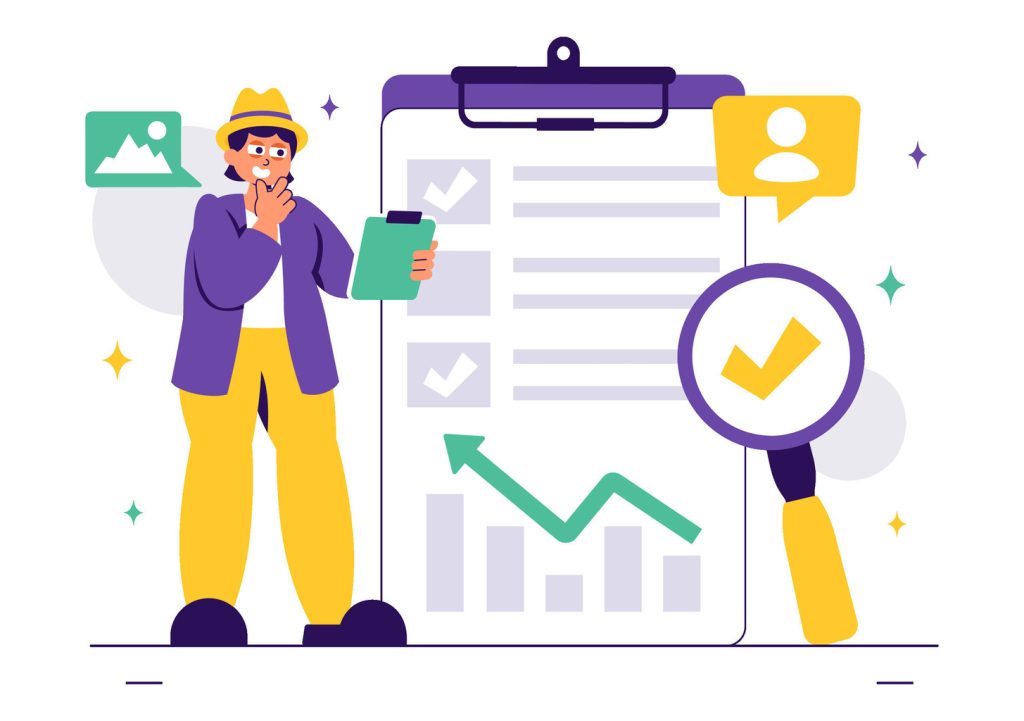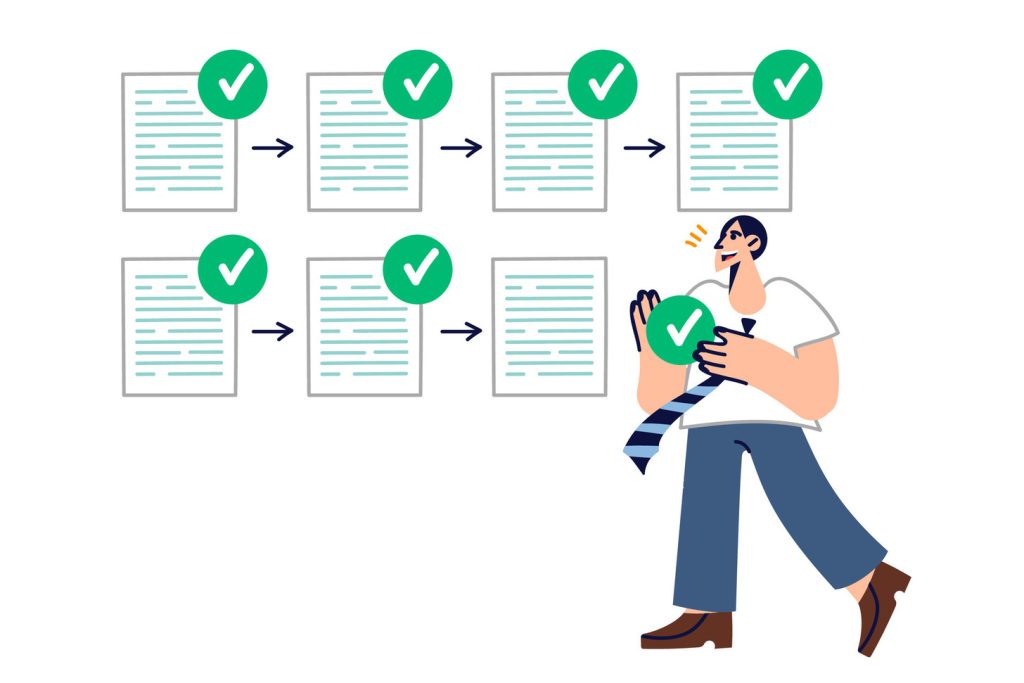The Importance of Ticket History And Audit Trail

Modern organizations thrive on clarity. Detailed chronological tracking systems create operational visibility while meeting strict compliance standards. These tools document every digital interaction, from financial transactions to user permissions, forming a protective layer for sensitive data.
Industries like healthcare and finance rely on these frameworks to safeguard critical information. When integrated with workflow platforms like CRM solutions, they transform into strategic assets. This combination allows teams to monitor progress while maintaining accountability across departments.
Robust tracking mechanisms reduce investigation timelines during compliance reviews. They also deter unauthorized activities by creating permanent activity records. Companies using these systems report faster audit cycles and stronger security postures.
Key Takeaways
- Compliance requirements demand precise activity documentation
- Real-time tracking minimizes security vulnerabilities
- Centralized records accelerate dispute resolution
- Operational transparency boosts stakeholder confidence
- Integrated systems simplify regulatory reporting
Understanding the Value of Ticket History And Audit Trail

Effective business operations depend on traceable decision-making. Comprehensive tracking frameworks act as digital witnesses, capturing every action within organizational processes. These systems transform routine workflows into verifiable chains of evidence.
Core Tracking Mechanisms Explained
An audit trail serves as a timestamped sequence documenting system interactions. Unlike basic logs, it identifies users, actions, and outcomes across multiple touchpoints. Financial teams use these records to reconstruct transaction pathways during compliance checks.
Healthcare providers leverage similar frameworks to monitor access to sensitive information. Every view or edit of patient files generates immutable proof of activity. This approach satisfies strict regulations while enabling rapid incident analysis.
Building Trust Through Verification
Transparent documentation eliminates ambiguity in team workflows. When discrepancies arise, managers review chronological records instead of relying on conflicting accounts. This evidence-based approach accelerates conflict resolution in IT departments and customer service teams alike.
Manufacturing firms have reduced equipment maintenance disputes by 42% using detailed activity trails. “Traceability transforms speculation into actionable insights,” notes a compliance officer at a Fortune 500 manufacturer. Automated tracking also identifies recurring bottlenecks in supply chain processes.
Organizations prioritizing accountability experience 31% faster audit cycles. Regulators increasingly demand verifiable proof of control implementations, making robust audit trails essential for modern enterprises.
Key Components of a Robust Audit Trail
Operational integrity begins with verifiable proof of activities. Systems designed for precision capture essential details like event triggers, executed commands, and outcome confirmations. These elements form the backbone of trustworthy digital documentation.
Detailed Logging and Time Stamps
Every system interaction leaves a footprint. Advanced solutions record exact moments of activity down to the second. This precision helps teams:
- Reconstruct event sequences during compliance checks
- Identify patterns in system behavior
- Verify completion timelines for critical tasks
Modern tools automatically tag data modifications with exact timestamps. Financial institutions use this feature to resolve transaction disputes within hours instead of days.
User Identification and Action Tracking
Accountability requires clear attribution. Robust systems link every activity to specific individuals through secure authentication protocols. Healthcare networks, for example, track who accessed patient records and when.
“Granular visibility transforms how we manage permissions,” explains a cybersecurity specialist at a leading tech firm. Automated tracking captures command inputs and system responses without slowing workflows.
Organizations balancing security with performance often reference ClearCRM’s privacy policy for best practices in user activity monitoring. Proper configuration ensures comprehensive oversight while maintaining operational speed.
Compliance and Regulatory Requirements for Audit Trails

Regulatory frameworks shape how enterprises manage digital operations. Industries face distinct mandates for maintaining verifiable activity records. These rules protect stakeholders while ensuring operational transparency across departments.
Meeting Financial and IT Regulations
Public companies navigate strict standards under the Sarbanes-Oxley Act. Independent auditors demand annual reviews of financial controls and transaction histories. Banks face additional scrutiny from FDIC examiners who analyze complete user activity logs during routine checks.
IT teams align with frameworks like ISO 27001 to safeguard system access points. “Proactive documentation eliminates last-minute scrambles before audits,” states a cybersecurity lead at a Fortune 500 bank. Automated tracking tools help institutions demonstrate adherence to evolving standards without disrupting workflows.
Ensuring Data Security and Integrity
Healthcare providers implement systems that track every access to patient records. HIPAA guidelines require timestamped proof of who viewed or modified sensitive files. Pharmaceutical manufacturers similarly follow FDA protocols to document quality control processes.
| Industry | Regulation | Key Requirement |
|---|---|---|
| Banking | FDIC Standards | Full transaction history retention |
| Healthcare | HIPAA | Access tracking for patient records |
| Manufacturing | FDA 21 CFR Part 11 | Electronic signature verification |
Organizations that integrate compliance needs into daily operations reduce legal risks. Regular system updates and staff training ensure alignment with changing requirements. This approach builds trust with regulators and customers alike.
Modern Ticketing Systems and Integrated Audit Trails
Technological advancements reshape how teams handle operational workflows. Sophisticated platforms now merge task coordination with compliance-grade documentation, creating self-regulating ecosystems. These solutions eliminate manual oversight through intelligent automation while preserving essential accountability markers.
Workflow Automation and Role-Based Access Controls
Automated routing protocols streamline repetitive processes across departments. When a service request enters the system, predefined rules assign tasks and escalate issues without human intervention. Each automated decision generates timestamped logs, maintaining an unbroken chain of operational evidence.
Security protocols restrict data visibility through tiered permissions. Financial institutions configure access controls to ensure only authorized teams view transaction histories. “Granular permissions prevent accidental leaks while maintaining audit readiness,” explains a cybersecurity architect at a leading tech firm.
Advanced Reporting and Analytics Features
Operational dashboards transform raw logs into visual performance metrics. Managers track resolution patterns, identify recurring bottlenecks, and allocate resources using real-time updates. These insights drive continuous improvements in service delivery timelines.
| Feature | Traditional Systems | Modern Platforms |
|---|---|---|
| Data Collection | Manual entry | Auto-generated logs |
| Access Management | Basic permissions | Role-based controls |
| Reporting Depth | Static summaries | Interactive analytics |
Integrated software reduces compliance preparation time by 58% according to recent industry studies. Teams generate regulator-ready reports with one-click exports, demonstrating adherence to evolving standards. This dual focus on efficiency and transparency positions organizations for sustainable growth.
Ticket History And Audit Trail
Operational excellence requires more than task completion. Modern systems designed for accountability transform routine workflows into strategic assets. These platforms capture every digital interaction while maintaining strict compliance standards.
Core Concepts and System Benefits
Advanced management tools create immutable records of user actions and outcomes. Unlike basic task trackers, they document who performed specific operations, when changes occurred, and how results were achieved. Financial institutions use these capabilities to resolve transaction disputes 73% faster.
“Granular visibility separates effective oversight from guesswork,” states a cybersecurity architect at a leading tech firm. Healthcare networks leverage similar tracking to monitor access to sensitive information, ensuring HIPAA compliance through automated logging.
Differentiating from Traditional Ticketing Systems
Legacy platforms prioritize workflow speed over documentation depth. Modern solutions balance efficiency with comprehensive data capture. Key contrasts include:
| Feature | Basic Tools | Advanced Systems |
|---|---|---|
| Compliance Support | Manual reporting | Auto-generated proofs |
| Security Protocols | Standard permissions | Role-based controls |
| Data Retention | Limited history | Full lifecycle records |
Organizations using upgraded systems report 68% faster audit preparation times. Scalable architectures handle growing data volumes without performance loss. This evolution positions businesses to meet evolving regulatory demands while maintaining operational agility.
Reaping the Benefits: From Fraud Prevention to Efficiency

Strategic documentation practices deliver measurable protections across organizational operations. Beyond compliance, these systems actively strengthen defenses while optimizing critical processes. Businesses gain dual advantages—risk mitigation and operational refinement—through well-designed tracking frameworks.
Preventing Internal and External Fraud
Detailed activity logs create accountability that discourages malicious behavior. When employees know every action leaves a record, attempts to manipulate financial data drop by 58% according to industry studies. Real-time monitoring flags unusual patterns instantly, like repeated login failures or unauthorized file access.
External threats meet stronger resistance through layered security protocols. Automated alerts notify teams of suspicious IP addresses or atypical transaction volumes. “Visibility acts as both shield and deterrent,” observes a cybersecurity consultant at a Fortune 500 firm.
Enhancing Audit Efficiency and Disaster Recovery
Organized digital trails transform compliance reviews from stressful marathons into streamlined processes. Auditors verify transaction validity 73% faster when presented with chronological records. This precision reduces external audit fees by eliminating redundant verification steps.
Disaster recovery plans gain reliability through immutable audit trail backups. Businesses restore operations faster after system failures using preserved activity histories. Critical business functions resume with minimal downtime, maintaining stakeholder trust during disruptions.
Best Practices for Implementing Audit Trails

Implementing effective audit frameworks demands strategic foresight and precision. Organizations must prioritize critical systems while ensuring comprehensive coverage across all operations. A risk-based approach identifies high-impact areas needing detailed logging, such as financial controls under SOX mandates requiring 366-day retention.
Regular Monitoring and Data Validation
Continuous oversight ensures audit trails remain accurate as processes evolve. Teams should:
- Review log completeness quarterly
- Test data capture mechanisms annually
- Update tracking protocols during system upgrades
One healthcare provider reduced compliance errors by 34% through weekly data integrity checks. Automated alerts flag incomplete records before audits, maintaining evidentiary reliability.
Secure Storage and Controlled Access
Protecting audit trails requires multi-layered security strategies. Financial institutions use encrypted repositories with tiered access levels, ensuring only authorized roles view sensitive logs.
“Immutable storage prevents tampering while preserving forensic value,”
notes a cybersecurity architect at a leading fintech firm.
Best practices include:
- Automated backups to geo-redundant servers
- Real-time anomaly detection systems
- Mandatory multi-factor authentication
These measures maintain data integrity while supporting efficient regulatory reviews. Companies embedding audit requirements into project lifecycles report 29% faster compliance certifications.
Real-World Applications and Industry Insights
Industry leaders transform compliance frameworks into strategic assets through actionable insights. Practical implementations reveal how systems drive measurable improvements across diverse sectors.
Case Studies Across Financial, Healthcare, and IT
Healthcare networks use digital verification tools to monitor access to patient records. One hospital reduced unauthorized data views by 61% using audit trails integrated with EHR platforms. These systems automatically log every interaction, ensuring HIPAA compliance during regulatory reviews.
Financial institutions employ similar technology to track trading activities. A major stock exchange resolved 89% of transaction disputes within 24 hours using timestamped activity logs. IT departments aggregate data from multiple sources, creating unified visibility across complex operations.
Strategies for Continuous Improvement
Progressive organizations conduct quarterly reviews of logging protocols. Cross-department teams identify gaps in data capture while aligning processes with evolving regulations. Automation tools streamline evidence collection, cutting audit preparation time by 44% in manufacturing firms.
Regular staff training ensures consistent use of tracking systems. One bank improved compliance scores by 37% through role-based simulations of audit scenarios. These strategies turn regulatory requirements into opportunities for operational refinement.

